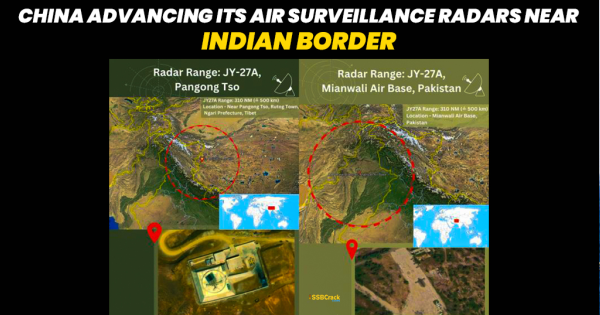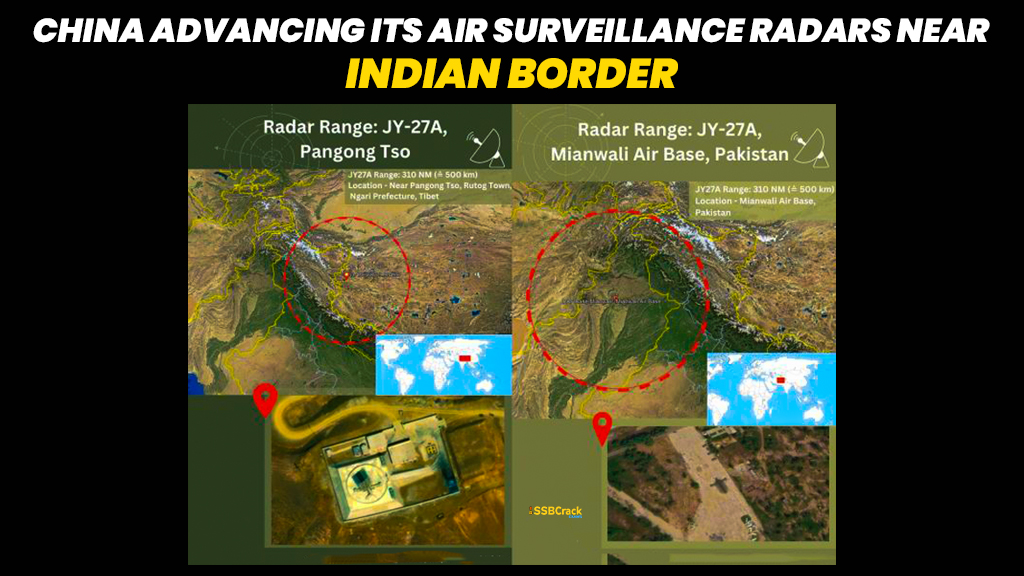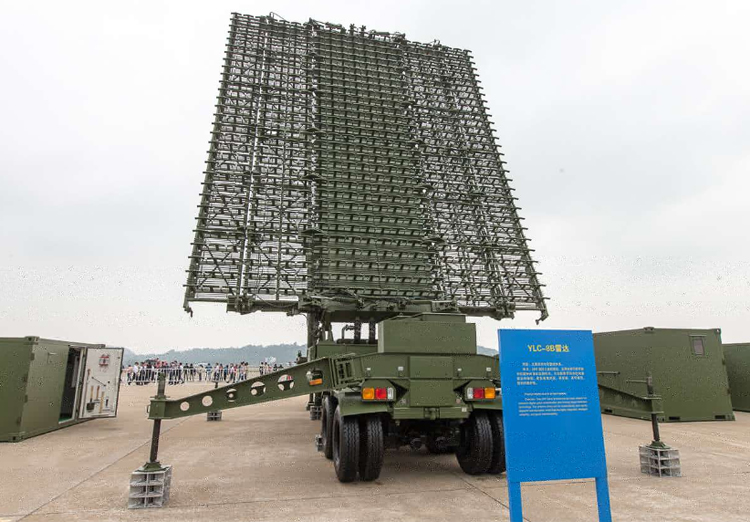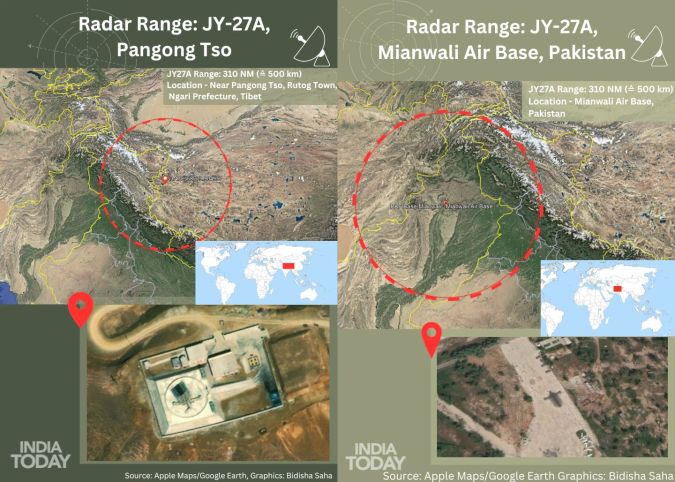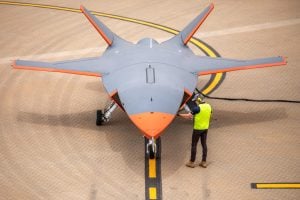China has been extending its advanced air surveillance radar network from east to west in order to counter India’s growing air warfare capability. Experts disagree that China’s superior observation radar technology poses a danger to India’s airstrike capabilities.
China Advancing its Air Surveillance Radars Near Indian Border
Satellite photographs making the rounds on social media’s OSINT (Open Source Intelligence) circle highlight the Chinese advanced surveillance radar system, which has been strategically positioned to blanket India’s northern border. Since 2017, China has been beefing up its air defence capabilities in order to counter neighboring strikes and neutralize aerial threats. It has now added a 3-D long-range aviation surveillance and guiding radar, JY27A, near the landmarks of Pangong Lake in eastern Ladakh and Mianwali Airbase in Pakistan, where standoffs have occurred.
Also read: How India’s UAV Programme Is Lacking Behind Against China’s Close To Deploying Supersonic Spy Drones
The powerful anti-sheath radar system can detect early symptoms of an airstrike over a 500-kilometer radius, which includes sections of Jammu and Kashmir, Himachal Pradesh, and Uttarakhand in northern India. Pakistan, on the other hand, is said to have installed the Chinese-made JY-27A counter radar at Mianwali Air Base, as seen in satellite imagery from September 2019 by Jane’s Defence Weekly, a US-based defence publication.
Using its active phased array antenna and exceptionally high-frequency waves, this 3D long-range air-to-air warning radar system can identify stealth aircraft as powerful as the American F-22 raptor from 500km (310 nautical miles) away. It is resistant to jamming and might lead surface-to-air missiles (SAM) to attack oncoming aircraft using its terrain-adaptive measuring technology mounted on land or train.
An examination of the satellite imagery reveals that the radar is located around 50 km from the LAC (Line of Actual Control) in the Ngari prefecture area near Rutog town and is not in Indian-claimed territory. However, with a detection range of around 500 km, it is capable of detecting early air signals from northern India, including Ladakh, Uttarakhand, Srinagar, and parts of Punjab, Haryana, and Kashmir.
Also read: How Is China Expanding Its Naval Presence In Indian Ocean
The date of the build-up in the Pangong region coincides with the extended stalemate between India and China in the eastern Ladakh region, implying that China began preparing its air defence system in anticipation of future Indian attacks. This move occurred after Indian warplanes carried out airstrikes in Pakistan in February 2019, escalating tensions between the two nuclear-armed countries. It was the first time in decades that an Indian aircraft had crossed the Line of Control to strike. According to media sources, Indian Mirage 2000 fighter jets dropped bombs on a “terrorist camp” near Pakistan-controlled Balakot in the early morning hours.
Only after this did Pakistan obtain this modern air-defense early detection radar system from its “all-weather” friend, China, which is meant to impede India’s developing air warfare capabilities. The IAF’s combat aircraft armament includes recently purchased Rafael planes equipped with beyond-visual-range (BVR) missiles.
Defence Expert: No Threat to India’s Air Strike Capabilities
Experts disagree that such radars constitute a threat to India’s airstrike capability or the IAF’s air weapons. According to Group Captain Uttam Kumar Devnath of the Indian Air Force, “China has deployed similar long-distance surveillance radars at five more locations across LAC, and IAF knows exactly all the locations and capabilities.” We have fully integrated these radars into our future operations plans, including how to avoid, evade, degrade, and neutralize them.”
Also read: Indian Army Personnel To Learn Chinese At Tezpur University To Engage With PLA Troops
China has historically used force to defend its territory and interests, but it is now pressing its territorial claims aggressively, using more weaponry than ever before. Its military aggression reflects a growing sense of confidence and capability, but it also represents a willingness to confront. This year’s enhanced operational pace followed a modernization program that began in 1990 and flourished under its autocratic leader, Xi Jinping, focusing on navy and missile capabilities that have transformed power balances in the Pacific.
To crack the SSB Interview and join the Indian Army as an Officer, You can join our SSB interview live classes batch and we recommend you to Enroll SSB INTERVIEW ONLINE COURSE. Trusted by thousands of defence aspirants.
Also read:
- All About Hawk Air Defence Equipment
- All About Swathi Weapon Locating Radar
- Significance Of ISTAR Surveillance Aircraft For The IAF
- List Of The Radar Systems Used By Indian Armed Forces
- Complete List Of Air Defence Systems Used By The Indian Armed Forces
- All About IAF’s First Indigenously Developed 3D Mobile Surveillance Radar: Rohini Radar
- All About Indigenously Made Medium Power Radar Arudhra
- Why Is Pakistan Deploying The New TPS-77 Radar Near The India Border?
